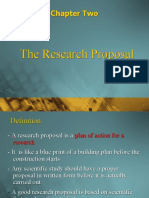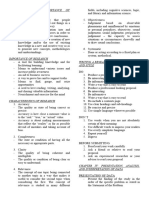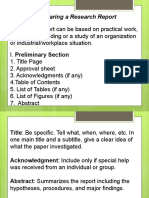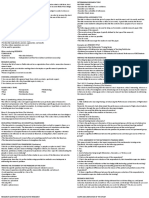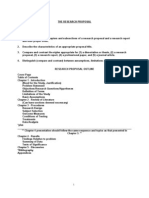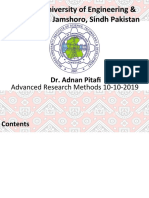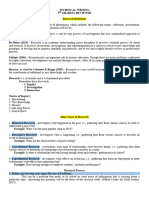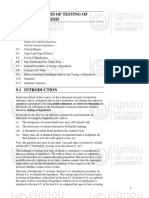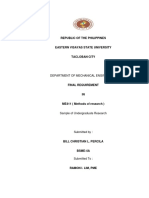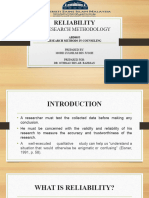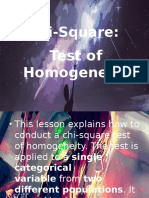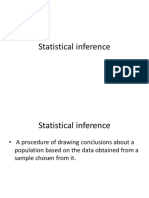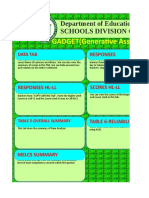0% found this document useful (0 votes)
101 views6 pagesEcahandouts ThesisOutline
The document discusses key aspects of conducting research such as defining research, different types of research, how to classify and methods of research. It also outlines the conventional parts of a research proposal including the introduction, materials and methods, expected outputs and budget. Important considerations for writing an effective research title, introduction and organizing the methodology are provided. Guidelines for evaluating proposals and common causes for rejection are also mentioned.
Uploaded by
Virg Sci-hiCopyright
© © All Rights Reserved
We take content rights seriously. If you suspect this is your content, claim it here.
0% found this document useful (0 votes)
101 views6 pagesEcahandouts ThesisOutline
The document discusses key aspects of conducting research such as defining research, different types of research, how to classify and methods of research. It also outlines the conventional parts of a research proposal including the introduction, materials and methods, expected outputs and budget. Important considerations for writing an effective research title, introduction and organizing the methodology are provided. Guidelines for evaluating proposals and common causes for rejection are also mentioned.
Uploaded by
Virg Sci-hiCopyright
© © All Rights Reserved
We take content rights seriously. If you suspect this is your content, claim it here.
/ 6





